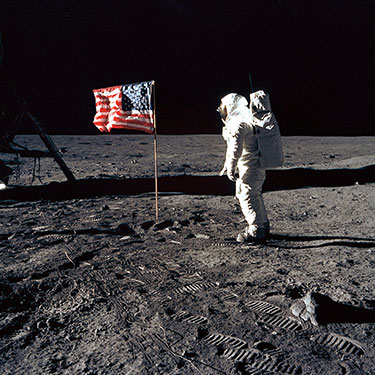On July 20, 1969, Bill Barry begged his parents to let him stay up late. One of the biggest events in history was about to happen, and the 11-year-old from Massachusetts didn’t want to miss it.
“I was glued to the floor in front of our black-and-white TV in our living room,” Barry recalls.
At 10:56 p.m., Barry—along with more than 500 million other people worldwide—witnessed what many had thought was impossible. They watched Neil Armstrong become the first person to set foot on the moon. Fellow astronaut Edwin “Buzz” Aldrin joined him 20 minutes later. For the first time, humans had visited a place beyond Earth.
Like so many others, Barry will never forget hearing Armstrong utter these famous words as he stepped onto the lunar surface: “That’s one small step for [a] man, one giant leap for mankind.”
On July 20, 1969, Bill Barry begged his parents to let him stay up late. One of the biggest events in history was about to happen. The 11-year-old from Massachusetts didn’t want to miss it.
“I was glued to the floor in front of our black-and-white TV in our living room,” Barry recalls.
At 10:56 p.m., Barry witnessed what many had thought was impossible. More than 500 million other people worldwide also tuned in. They watched Neil Armstrong become the first person to set foot on the moon. Fellow astronaut Edwin “Buzz” Aldrin joined him 20 minutes later. For the first time, humans had visited a place beyond Earth.
Like so many others, Barry will never forget hearing Armstrong utter his famous words. As he stepped onto the lunar surface, he said, “That’s one small step for [a] man, one giant leap for mankind.”



